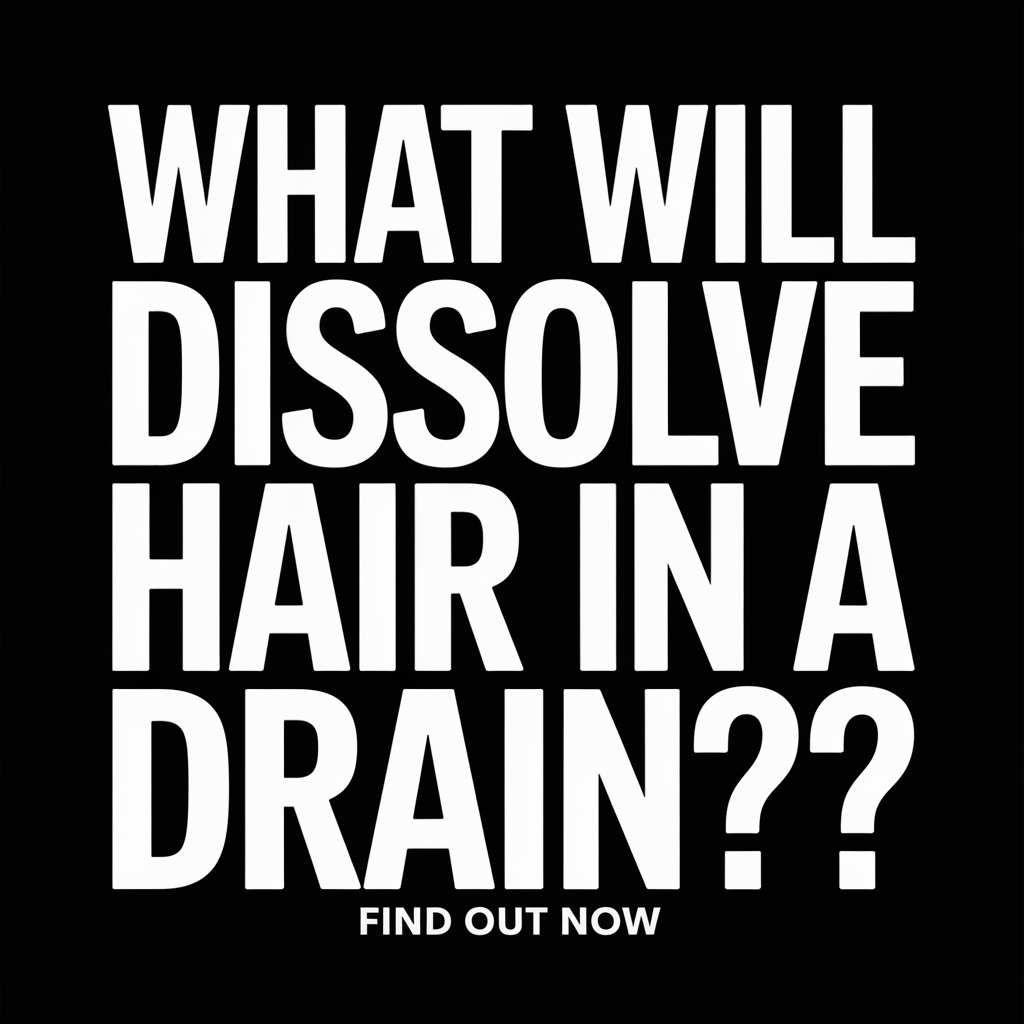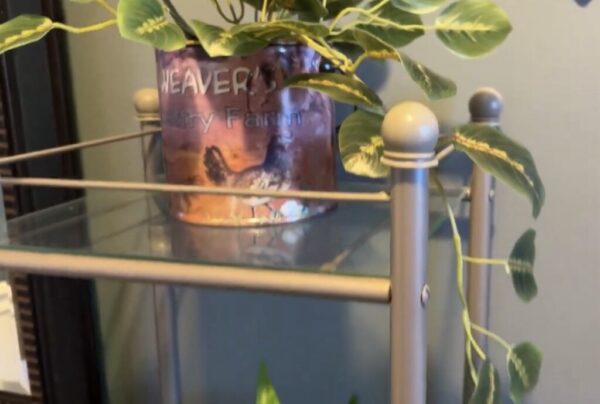
What Will Dissolve Hair in a Drain? Real Solutions That Actually Work
If you’ve ever stood in ankle-deep water during your shower—or watched your bathroom sink gurgle and slow to a crawl—chances are, you’ve got a hair clog. And if you’re anything like me, your first question is probably: what will dissolve hair in a drain without wrecking your pipes?
You’re not alone. Hair clogs are one of the most annoying and most common causes of slow drains in the bathroom. They’re sneaky, build up fast, and often mix with soap scum and gunk to create one stubborn mess.
In this guide, we’re diving into what actually dissolves hair in drains, from natural home remedies to enzyme-based cleaners—and when it’s time to call in the big guns.
And yep—here’s a full guide with step-by-step DIY drain unclogging methods if you’re ready to get hands-on.
Why Hair Clogs Happen in the First Place
Before we talk about solutions, it helps to know what we’re up against.
Hair doesn’t just flow neatly down the drain. It gets caught on rough pipe edges, old toothpaste buildup, or even grease from soaps and conditioners. Over time, it forms a net-like barrier that traps more hair and debris, eventually clogging things up entirely.
If you’ve ever dumped grease down the kitchen sink, you’ll understand the concept. Grease hardens and causes major problems fast. This article shows the hidden damage that happens from pouring grease down the drain.
Combine that with long strands of hair, and you’ve got yourself a drain disaster.
Enzyme Drain Cleaners: The Safe Way to Dissolve Hair
If you’re looking for a pipe-safe, non-toxic way to break down hair, look no further than enzymatic drain cleaners.
These products use natural enzymes and bacteria that “eat away” at organic matter like hair, skin cells, and even soap scum. They’re usually labeled as septic-safe, eco-friendly, and unlike chemical drain cleaners, they won’t corrode your pipes.
Enzyme cleaners won’t give you instant results like some harsh chemical brands, but they’re ideal for routine maintenance or slow-building clogs.
✅ Pro tip: Use enzyme cleaners once a month to prevent hair buildup in the first place. You’ll avoid a big mess later.
Baking Soda and Vinegar: The Classic DIY Method
Want to go the natural route? This combo works surprisingly well for minor hair clogs:
- Pour ½ cup of baking soda down the drain.
- Follow it with 1 cup of white vinegar.
- Cover the drain with a stopper and wait 15–30 minutes.
- Rinse with boiling hot water.
The chemical reaction loosens up gunk and may help push through soft hair clogs. It’s not a magic bullet, but it’s one of the fastest and safest DIY fixes for a mildly clogged shower drain.
✅ Bonus tip: Don’t pour boiling water into PVC pipes regularly—only use this method occasionally.
If you want the fastest way to remove hair from a drain and the full DIY breakdown, check out our quick-start guide right here.
Boiling Water Alone (Yes, Sometimes It Works)
Believe it or not, plain boiling water can sometimes break up soft clogs caused by hair and soap buildup—especially if it hasn’t hardened into a nasty clump.
It’s best used in combination with other methods or as a first step. Just be cautious with older pipes or plastic plumbing systems, and don’t use this trick too often if your home has PVC.
Hair Dissolving Chemicals: Do They Work?
You’ve seen them at the store—those powerful gel or foaming drain cleaners that promise to dissolve hair instantly. And yes, they can work.
But here’s the catch:
- Many contain sodium hydroxide (lye) or sulfuric acid, which are highly corrosive.
- They can damage your pipes, fixtures, and septic systems with frequent use.
- The fumes can be dangerous, especially in tight bathrooms.
If you’re going to use one, wear gloves and goggles, follow directions to the letter, and don’t use them if you’ve already tried another cleaner recently—mixing products can cause chemical reactions you do not want to deal with.
Drain Snakes and Hair Removal Tools
Sometimes dissolving isn’t enough—you need to pull that hair clog out manually.
That’s where a drain snake or barbed drain cleaning tool comes in. These cheap plastic tools are easy to use and highly effective for hair.
Here’s how I use them:
- Remove the drain stopper or unscrew the strainer.
- Insert the snake into the drain slowly.
- Twist and pull back gently — you’ll likely bring out a slimy mess of hair.
- Clean the tool, repeat if needed, then run hot water.
Gross? Yep. Effective? Absolutely.
The Plunger Method: Not Just for Toilets
A small sink plunger can sometimes loosen hair clogs in bathroom sinks or tubs. Just fill the sink or tub with a little water, place the plunger over the drain, and give it a few quick pumps.
This method works best for shallow clogs—not ones buried deep in the pipes.
But if your toilet is part of the problem too, you’ll want to address that first. A constantly running toilet can point to issues unrelated to hair—but still annoying. Here’s how to fix a toilet that won’t stop running if that’s on your list too.
When Nothing Works: Could It Be the Vent Pipe?
Here’s something most people never think about: a clogged sewer vent pipe can cause drainage issues that feel like clogs—but aren’t.
These pipes allow air into the plumbing system so water can flow smoothly. When blocked, you’ll notice gurgling drains, strange smells, or backups—even when the drain is technically “clear.”
Learn how to spot and fix a clogged sewer vent pipe before calling a plumber.
Smells Like Rotten Eggs? Here’s What’s Going On
Sometimes, hair clogs trap gunk and bacteria, creating a nasty sulfur smell in your bathroom or kitchen. That’s often a sign that your drain is full of decomposing organic matter—and it needs to be cleaned ASAP.
Here’s why your house might smell like rotten eggs—and how to fix it fast before it gets worse.
Boost Your Drainage Long-Term: Fix Water Pressure Too
Here’s something else you might not expect: low water pressure can actually make clogs worse by failing to fully flush debris through the system.
If your whole house has sluggish water, not just one drain, it might be time to improve pressure overall. We’ve got a full guide to improving water pressure for homeowners who want fewer plumbing headaches.
Prevent Future Hair Clogs: Smart Tips That Work
Once you finally get your drain cleared, you’ll want to keep it that way. Here’s what works for me:
- Use a drain hair catcher in every shower and sink.
- Brush hair before showering to minimize shedding.
- Don’t use heavy oils or conditioners that stick to pipes.
- Flush with boiling water weekly to keep things flowing.
- Use enzyme cleaner monthly for maintenance.
It’s way easier to prevent a hair clog than to fix one every few weeks.
Don’t Remodel Without Thinking About Plumbing!
If you’re planning a bathroom or kitchen renovation, don’t forget the plumbing setup—especially when it comes to drain slope and accessibility. A poorly installed or sloped drain line makes hair buildup worse.
Avoid these remodeling mistakes so you’re not back to plunging two weeks after your fancy new sink is installed.
Tools Every Homeowner Needs for Drain Fixes
I’ve tackled more clogs than I can count, and I always keep these on hand:
- Plastic barbed hair tool
- Enzyme drain cleaner
- Baking soda and vinegar
- Small sink plunger
- Adjustable wrench
- Drain snake
Want a full rundown of gear that’ll save your weekend plumbing sanity? Check out these 7 must-have tools for homeowners — especially if you’re new to DIY.
The Bottom Line: What Will Dissolve Hair in a Drain?
So what really works?
- Enzymatic cleaners are the best long-term, safe solution.
- Baking soda and vinegar offer a quick, non-toxic DIY fix.
- Drain snakes and tools help yank out stubborn clumps.
- Chemical cleaners work, but should be a last resort.
If you’re tired of slow drains and gunky backups, don’t wait until it’s fully clogged. Try one of these solutions today, and grab the full breakdown in our DIY drain hair removal guide for step-by-step help that actually works.
As an Amazon Associate we earn from qualifying purchases through some links in our articles.



